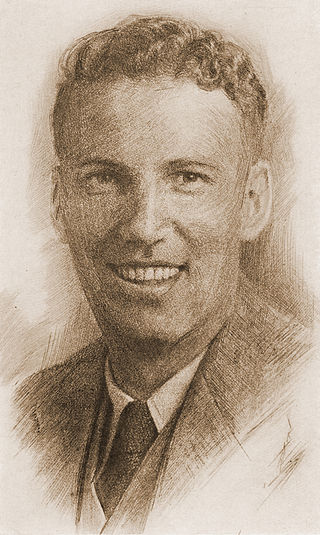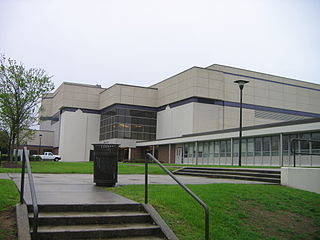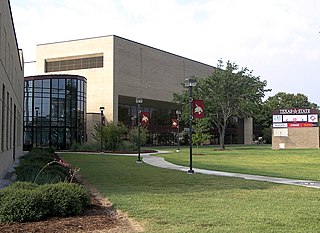
Reser Stadium is an outdoor athletic stadium in the northwest United States, on the campus of Oregon State University in Corvallis, Oregon. It is the home of the Oregon State Beavers of the Pac-12 Conference, and opened 70 years ago in 1953 as Parker Stadium. It was renamed in 1999.

The Veterans Memorial Coliseum is an indoor arena located in the oldest part of the Rose Quarter area in Portland, Oregon. The arena is the home of the Portland Winterhawks, a major junior ice hockey team, and was the original home of the Portland Trail Blazers of the National Basketball Association. It has been included on the National Register of Historic Places in recognition of its architectural significance.

Amory Tingle "Slats" Gill was an American college basketball coach, the head coach at Oregon State University in Corvallis for 36 seasons. As a player, Gill was twice named to the All-Pacific Coast Conference basketball team. As head coach, he amassed 599 victories with a winning percentage of .604. Gill was also the head coach of the baseball team for six seasons and later was the OSU athletic director.

Thompson–Boling Arena at Food City Center is a multi-purpose arena on the campus of the University of Tennessee in Knoxville, Tennessee. The arena opened in 1987. It is home to the Tennessee Volunteers (men) and Lady Vols (women) basketball teams. Since 2008, it has been home to the Lady Vols volleyball team. It is named after B. Ray Thompson and former university president Edward J. Boling. The basketball court is named "The Summitt" after the late Lady Vols basketball coach Pat Summitt. It replaced the Stokely Athletic Center. The mammoth octagonal building lies just northwest of the Tennessee River, and just southwest of Neyland Stadium. As an echo of its neighbor and a tribute to the brick-and-mortar pattern atop Ayres Hall, the baselines of the court are painted in the familiar orange-and-white checkerboard pattern.

The Pete Maravich Assembly Center is a 13,215-seat multi-purpose arena in Baton Rouge, Louisiana. The arena opened in 1972. It was originally known as the LSU Assembly Center, but was renamed in honor of Pete Maravich, a Tiger basketball legend, shortly after his death in 1988. Louisiana governor Buddy Roemer signed an act to rename the building in Maravich's honor. Maravich never played in the arena as a collegian but played in it as a member of the Atlanta Hawks in a preseason game. But his exploits while at LSU led the university to build a larger home for the basketball team, which languished for decades in the shadow of the school's football program. The Maravich Center is known to locals as "The PMAC" or "Pete's Palace", or by its more nationally known nickname, "The Deaf Dome", coined by Dale Brown. The Maravich Center's neighbor, Tiger Stadium is known as "Death Valley".

Beasley Coliseum is a general-purpose indoor arena in the northwest United States, located on the campus of Washington State University in Pullman, Washington. The home venue for the Cougars men's and women's basketball teams of the Pac-12 Conference, it opened 50 years ago in 1973, and its current seating capacity is 12,058 for basketball.

The Littlejohn Coliseum is a 9,000-seat multi-purpose arena in Clemson, South Carolina, United States. It is home to the Clemson University Tigers men's and women's basketball teams. It is also the site of Clemson graduations and the Clemson Career Fair. It is owned and operated by Clemson University and hosts more than 150 events per year including concerts, trade shows, galas, and sporting events.

The Charleston Coliseum & Convention Center is a municipal complex located in the downtown area of Charleston, West Virginia, United States. Originally completed in 1958, it consists of four main components: the Coliseum, the Theater, the Auditorium, and the Convention Center.

The UNT Coliseum is a 9,797-seat multi-purpose arena located in Denton, Texas, United States, built in 1973. While the arena's formal name is the UNT Coliseum, the building is more commonly referred to as the Super Pit, a nickname derived from its proximity to the former home of the Mean Green basketball teams, the Ken Bahnsen Gym, nicknamed the Snake Pit. Most signage inside the stadium uses the Super Pit name; the most prominent usage of the UNT Coliseum name is above a single new set of ticket windows added during 2017 renovations.

The Paul J. Meyer Arena, which is part of the Ferrell Center, is an arena in Waco, Texas. Built in 1988 and located adjacent to the Brazos River, it is home to the Baylor University Bears basketball and volleyball teams. It is named for Charles R. Ferrell, a Baylor student and legacy who died in 1967, and whose family's estate was a major benefactor of the arena. The building replaced the Heart O' Texas Coliseum as the school's primary indoor athletic facility.

Williams Arena at Minges Coliseum is a multi-purpose arena in Greenville, North Carolina, US. The arena opened in 1968. It is home to the East Carolina University Pirates men's and women's basketball teams and women's volleyball team. The facility underwent a complete renovation prior to the 1994–95 season and seats 8,000 people. The building was named for the Minges and Williams families in honor of their longstanding support of the University.

Ed & Rae Schollmaier Arena, formerly known as Daniel–Meyer Coliseum, is a basketball arena located on the campus of Texas Christian University (TCU) in Fort Worth, Texas, United States. The arena is part of the Daniel-Meyer Athletics Complex and sits between Amon G. Carter Stadium and Sam Baugh Indoor Practice Facility. The arena is home to the TCU Horned Frogs Men's and Women's basketball teams. It was built in 1961 and originally named after former TCU football and basketball coach Dutch Meyer and former TCU board member Milton Daniel. As part of the 2015 renovation, the facility was renamed for lead donors Ed & Rae Schollmaier. The facility currently seats 6,800 people.
Jack Stephens Center is a 5,600-seat multi-purpose arena on the campus of the University of Arkansas at Little Rock in Little Rock, Arkansas, United States and was built in 2005. It is home to the school's men's basketball, women's basketball, men's wrestling, and women's volleyball teams, known as the Little Rock Trojans, and named in honor of billionaire philanthropist Jackson T. Stephens, who donated $22.4 million for the construction of the facility. The facility is located on the north end of the University of Arkansas at Little Rock campus, adjacent to the University of Arkansas System Division of Agriculture Cooperative Extension Service State Office.

The Robins Center is a 7,201-seat multi-purpose arena in Richmond, Virginia. Opened in 1972, the arena is home to the University of Richmond Spiders basketball. It hosted the ECAC South men's basketball tournament in 1983. It is named for E. Claiborne Robins Sr, class of 1931, who, along with his family, have been leading benefactors for the school. The opening of the Robins Center returning Spider basketball to an on-campus facility for the first time since the mid-1940s when it outgrew Millhiser Gymnasium. In the intervening decades, the Spiders played home games in numerous locations around the Richmond area, including the Richmond Coliseum (1971–1972), the Richmond Arena (1954–1971), the Benedictine High School gymnasium (1951–1954), Grays' Armory (1950–1951) and Blues' Armory (1947–1950). The Robins Center arena serves as the location of the University of Richmond's commencement exercises and hosted a 1992 Presidential debate involving Bill Clinton, George H. W. Bush, and Ross Perot.

The Beeghly Physical Education Center, or simply Beeghly Center, is a 6,300-seat multi-purpose arena in Youngstown, Ohio. The arena, built at a cost of $5.5 million and named for local businessman Leon A. Beeghly, opened on December 2, 1972. It is home to the Youngstown State University Penguins basketball, volleyball, and swimming teams. The first event at the arena was a basketball game against the Ohio University Bobcats, which ended in a 68-59 Youngstown State victory.

The William H. Pitt Health and Recreation Center is a 2,062-seat multipurpose arena in Fairfield, Connecticut on the campus of Sacred Heart University. It was opened in August 1997 and is home to Sacred Heart University men's and women's basketball, men's and women's volleyball, men's wrestling and fencing. It hosted the finals of the 2008 Northeast Conference men's basketball tournament.

Strahan Arena is a 10,000-seat multi-purpose arena in San Marcos, Texas. It is an $8.8 million facility built in 1982 and is home to the Texas State University Bobcats men's basketball team, women's basketball team and women's volleyball team.

The Nebraska Coliseum is an indoor coliseum on the campus of the University of Nebraska–Lincoln in Lincoln, Nebraska. It was the home of Nebraska's men's basketball team from 1926 to 1976 and volleyball team from 1975 to 2013. Since volleyball moved to the Bob Devaney Sports Center in 2013, the Coliseum has been primarily used for student recreation, and occasionally hosts wrestling meets.

The Matthew Knight Arena (MKA) is a 12,364-seat, multi-purpose arena in Eugene, Oregon, United States. It is home of the University of Oregon Ducks basketball teams, replacing McArthur Court. It is located on the east side of campus at the corner of Franklin Boulevard and Villard Street, a gateway to campus as people arrive from I-5. The arena was originally intended to be ready for the start of the 2010–11 basketball season, but instead opened for the men's basketball game against the USC Trojans on January 13, 2011. It is named for chief donor Phil Knight's son, Matthew Knight, who died aged 34 in a scuba diving accident. The arena cost $227 million and was designed as collaboration between TVA Architects of Portland and Ellerbe Becket of Kansas City, Missouri. Hoffman Construction Company of Portland was the general contractor.

The Toyota Center is a multi-purpose arena in the northwest United States, located in Kennewick, Washington.


























